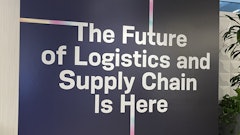
The last-mile logistics industry is facing a driver shortage, with recent reports placing the current shortfall at 80,000 drivers. By 2030, the number is expected to double.
Inadequate pay is one of the main drivers behind the issue, but it is not the only factor at play. The reality is many companies do not treat drivers in a way that communicates they are valued. Consequently, companies don’t earn their drivers’ loyalty.
As the driver shortage ripples across the industry, all companies that engage in last-mile logistics must take steps to navigate the new challenges it is causing. The following are some strategies that should be considered.
Re-evaluate the hiring process
The sense of urgency created by a talent shortage can lead companies to elevate availability over capability when recruiting. While that can help to fill empty slots, it can also bring in drivers who are not a good fit. The best strategy will seek to recruit good drivers who understand the company’s goals and can commit to supporting them.
That said, companies will also benefit from streamlining their recruiting process and reducing the barriers that might keep capable drivers from applying or qualifying. For example, companies should definitely re-evaluate their hiring process with an eye for reducing the time-to-hire. Decreasing the time it takes for an application to be processed and a new hire to be onboarded can make a company more attractive to available talent.
Qualifications developed during times when talent was plentiful should be re-evaluated to ensure requirements are not unnecessarily strict. It’s possible that some of the skills or experiences once considered “must-have” could be downgraded to “preferred” to bring in capable and motivated applicants. Companies that had required a certain number of years of experience in the past might reduce that requirement for applicants with a good driving record, for example. Taking steps to broaden qualifications essentially expands the talent pool from which a company can draw.
If the idea of hiring drivers with minimal experience is unsettling, consider adding skills assessment exercises to the hiring process. This can include utilizing simulations to allow candidates to show they have the necessary skills, rather than depending solely on a certain number of years of experience to prove their proficiency.
Develop an attractive work culture
Job seekers in every industry have made it clear that a positive company culture is important. They want a culture that considers employees, acknowledges their contributions, and supports both their personal and professional aspirations. Drivers, like any other employee, want to see their companies taking steps to value them.
To craft and maintain a positive culture, last-mile logistics companies should consider treating their drivers like partners. Bring them into the company’s operations, helping them to understand why you do what you do and what it means for them and the company at large.
A healthy culture also creates space for feedback and dialogue, rather than only offering top-down instruction with no room for discussion. Take the time to understand the needs drivers have and consider joining them on routes to experience exactly what they go through, then debrief to determine what is needed to keep both drivers and customers satisfied.
The employee experience is a part of culture that also should be considered. Competitive compensation is a central component of the employee experience and one that is playing a role in the driver shortage. Strong wages, benefits, and signing bonuses are steps companies may need to consider to attract competent and committed drivers. Flexible schedules are another element of the employee experience that is especially appealing to those seeking a healthier work-life balance.
Optimize delivery operations
If the shortage persists as some are predicting, last-mile logistics companies may find they cannot recruit the drivers needed to reach their goals. In that case, optimization strategies that allow them to do more with fewer drivers will be the key to empowering a business’s growth.
Route optimization can significantly extend the potential of businesses that are forced to work with a limited number of drivers. Route optimization platforms aided by artificial intelligence can reduce the amount of time and fuel needed for each delivery, empowering drivers to do more with fewer resources.
Utilizing urban warehouses and other micro-fulfillment centers can also optimize operations. This approach allows for one large vehicle to bring deliveries into a centralized warehouse where they are reorganized for local deliveries. In some cases, deliveries from these locations can utilize autonomous delivery vehicles, which are an emerging technology that promises to address some of the limitations being created by the driver shortage.
Consulting with clients on the most efficient way to organize their orders is another way to optimize operations. This involves helping them plan their ordering in a way that consolidates deliveries, which can result in a more manageable delivery volume for drivers and cost savings for the customer.
The driver shortage has emerged at a time when both delivery volumes and customer expectations are high. To meet the demand, last-mile logistics companies must be prepared to shift to new strategies. Re-evaluating their hiring processes, crafting an attractive workplace culture, and ensuring operations are optimized are three key steps they can take to navigate the new challenges they are facing.


























